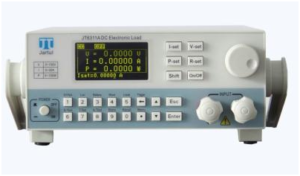
In the ever-evolving world of electronics and power testing, the ability to simulate real-world load conditions is a critical requirement. Programmable DC electronic loads have emerged as indispensable tools for testing, characterizing, and validating a wide array of power sources and devices. Whether you’re working with power supplies, batteries, or any other energy source, these electronic loads offer a level of control and precision that traditional methods cannot match.
In this article, we will explore the versatility of programmable DC electronic loads, highlighting their various applications, features, and the benefits they bring to the table.
What is a Programmable DC Electronic Load?
A Programmable DC Electronic Load is a device designed to mimic the behavior of a real-world load (like a circuit or a battery) that can be adjusted in terms of current, voltage, or power, with high precision. Unlike traditional resistive loads, programmable loads can simulate dynamic conditions, such as load transients, and provide a more accurate testing environment for power supplies, batteries, and other energy devices.
Key Features and Advantages of Programmable DC Electronic Loads
- Wide Load Range: Programmable DC electronic loads offer a wide range of voltage, current, and power settings. This feature makes them suitable for testing a variety of power sources across different voltage and current levels.
- Precision and Accuracy: These devices provide high precision in setting the load conditions, which is essential for accurate testing. They allow users to fine-tune parameters to simulate real-world load behaviors effectively.
- Dynamic Load Testing: Programmable loads can simulate dynamic loads by adjusting the resistance, current, or power in real-time. This is especially useful for testing power supplies under transient conditions, such as sudden load increases or decreases.
- Multiple Operating Modes: These electronic loads often come with different operating modes like constant current (CC), constant voltage (CV), constant power (CP), and constant resistance (CR). Each mode allows the user to test specific aspects of a power source under different conditions.
- Safety and Protection: Most programmable DC electronic loads come with built-in protection features, such as over-voltage, over-current, and over-temperature protections. These features ensure safe operation during tests, protecting both the device under test (DUT) and the load.
- Remote Control: Advanced programmable DC electronic loads support remote control through interfaces like USB, GPIB, or LAN. This feature is useful in automated test setups or situations where precise, computer-controlled testing is required.
Applications of Programmable DC Electronic Loads
The versatility of programmable DC electronic loads makes them ideal for a variety of applications across multiple industries. Here are some of the key areas where they are used:
1. Power Supply Testing
- Design Validation: Programmable DC electronic loads are crucial for testing power supplies during development. By simulating a range of operating conditions, they help validate the design and ensure that the power supply can perform under real-world loads.
- Efficiency Measurements: These loads can be used to measure the efficiency of power supplies by applying a constant load and calculating the power input and output. This is essential for power supply manufacturers looking to optimize energy consumption.
2. Battery Testing and Simulation
- Battery Discharge Testing: Programmable DC loads are ideal for testing batteries by simulating various discharge conditions. They can draw different currents or power levels from the battery to assess its performance and lifespan.
- Battery Capacity Testing: By setting specific discharge currents and monitoring voltage drops, programmable loads help determine the total capacity of a battery, which is critical for battery manufacturers and users.
3. Electric Vehicle (EV) Charging Systems
- Charging Station Testing: Programmable DC electronic loads can simulate the behavior of EV batteries during charging cycles. This helps test charging stations to ensure they can efficiently charge EV batteries under various conditions.
- EV Battery Testing: Similar to standard battery testing, programmable loads can simulate the charging and discharging cycles of EV batteries, helping ensure the battery management system (BMS) is functioning correctly.
4. Power Electronics Research and Development
- Component Stress Testing: In R&D, programmable DC electronic loads are used to apply specific load conditions to individual components such as capacitors, inductors, and diodes. This helps researchers study their behavior and performance under controlled stress.
- Characterization of Power Devices: Whether it’s semiconductors, transformers, or power converters, programmable electronic loads allow for precise testing of power devices to characterize their performance across different load conditions.
5. Renewable Energy Systems
- Solar Inverter Testing: In solar energy applications, programmable loads can simulate the behavior of solar panels or batteries. By adjusting the load, engineers can test the efficiency and stability of solar inverters under different environmental conditions.
- Wind Turbine Testing: Programmable loads can also simulate the dynamic loads experienced by wind turbines, allowing engineers to test power electronics and control systems used in wind energy production.
How to Choose the Right Programmable DC Electronic Load?
When selecting a programmable DC electronic load for your application, it’s important to consider the following factors:
- Voltage and Current Range: Make sure the load can handle the voltage and current levels you expect to work with. Higher-end models can handle more extreme conditions, while basic models are ideal for low-power testing.
- Accuracy and Resolution: Precision is key in power testing. Choose a model that offers high accuracy in current, voltage, and power measurements.
- Dynamic Load Capabilities: If you need to simulate fast load transients, look for a load that offers dynamic load capabilities, such as fast rise and fall times.
- Control Interface: If you’re planning to automate your testing or integrate the load into a larger test system, choose a model with an appropriate control interface, such as USB, GPIB, or LAN.
- Safety Features: Always consider the built-in safety features of the electronic load to protect your DUT and ensure safe testing.
For more detailed specifications and a comprehensive list of programmable DC electronic loads, visit Technical Products.
Conclusion
Programmable DC electronic loads are indispensable tools in modern power electronics testing, offering versatility, precision, and dynamic load simulation capabilities. Whether you’re testing power supplies, batteries, or renewable energy systems, these devices provide the flexibility and control needed to accurately simulate a wide range of real-world conditions.
As technology continues to advance, programmable DC electronic loads will remain an essential part of testing and development, driving innovation in various industries. To explore more about these powerful tools and discover the ideal solution for your needs, visit Technical Products.
By selecting the right programmable DC electronic load, engineers, researchers, and manufacturers can ensure that their products meet the highest standards of performance and reliability.







